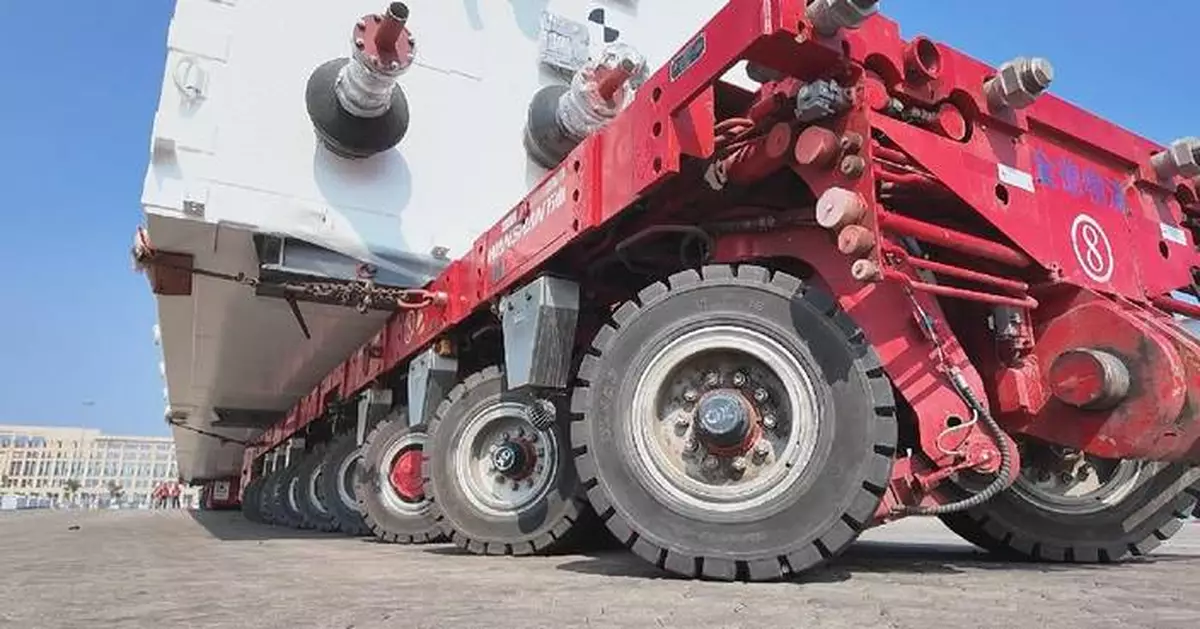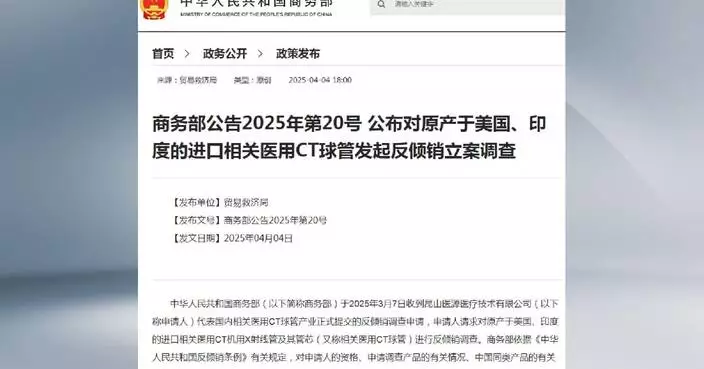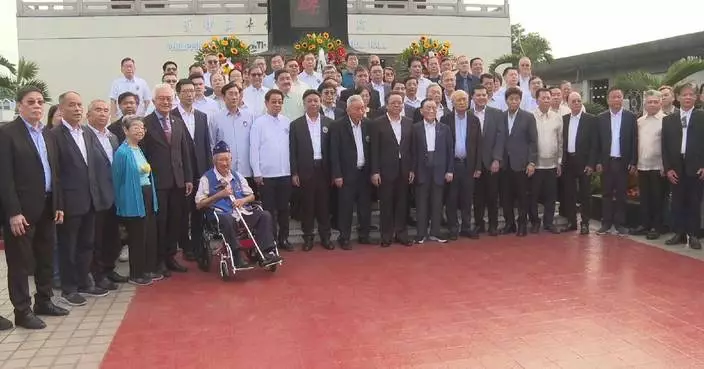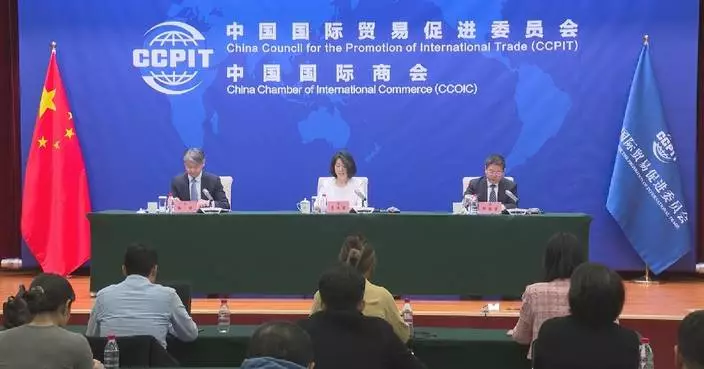China's heavy-duty transport vehicles have evolved as the country's developing infrastructure construction increases demand.
A transport machinery company, Wanshan Special Vehicle, in Xiaogan City, central China, has upgraded its heavy-duty automated guided vehicle (AGV), which is used to transport extra-large and heavy units. In its latest 4th version, the vehicle increases its single-axle load capacity from 30 tons to 60 tons to meet higher transport demands.
In the first half of this year, the company's total contract value increased by about 76 percent over the same period last year, as several large infrastructure and energy projects are underway in the country.
Shi Libing, transportation team leader of Sinopec Heavy Lifting and Transportation, a customer of the company, said their construction projects are in need of ultra heavy-duty vehicles.
"We are currently working on projects in various parts of the world, including the petrochemical and wind power industries, mainly involving a wide range of towers and heavy equipment," he said.
Among the tasks already completed by this machine are transporting more than 200 tons of extra-long cold boxes around several 90-degree corners to a dock six or seven kilometers away in northeastern China and, in Shanghai, cement cylinders weighing thousands of tons each used to reinforce embankments.
"The difficulty of the projects is upgrading, and the fittings and parts are larger in size, which is more demanding for transportation vehicles. Next, we construction companies will strengthen cooperation with equipment manufacturers to solve engineering problems and develop together," said Gu Yunjie, deputy project manager of Dayang Mountain Engineering Base.
Wang Hongling, heavy engineering director of Wanshan Special Vehicle, said the latest version of the AGV has shrunk in size but increased in load capacity for tougher transportation tasks.
"Reducing the weight of the 'giant' is a demonstration of the technical strength of our company. The increasing complexity of current projects requires us to improve our products, increasing their load capacity and minimizing their size and structure, in order to serve our country's high-end, precise and specialized transportation," she said.
To date, the company's vehicles have been exported to nearly 20 countries, including the United States, Australia, Norway, and Singapore. The development team is also designing new models with a single-axle load capacity of 70 tons for more demanding tasks.
"More and more super projects have emerged in various fields, which shows the capabilities of our country, and also provides a very good opportunity for us to research and develop heavy equipment to complete the transportation of super engineering parts. In the future, we will continue to build new quality productivity and enhance China's manufacturing capabilities," said Wang Libo, deputy manager of Wanshan Special Vehicle.
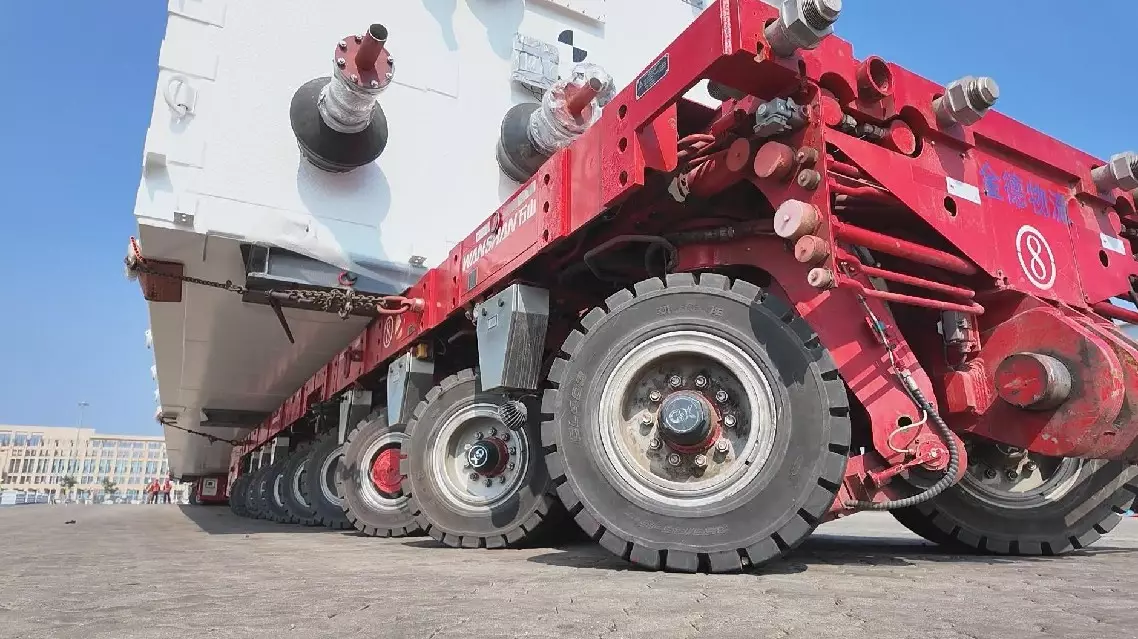
China's heavy duty transport vehicles evolve with infrastructure construction
As the Qingming Festival approaches this Friday, various traditional folk activities have been held across China, celebrating the rich cultural heritage of the occasion.
With a 2,500-year history, Qingming Festival, or the Festival of Pure Brightness, observed in early April, uniquely combines ancestral worship with the celebration of spring. Falling on the 15th day after the spring equinox, this ritual-rich observance reflects China's enduring values of ancestral veneration and inspires deep introspection about what gives life meaning.
In Sijia Village, Huayin City, northwest China’s Shaanxi Province, a unique swing festival is held to mark the occasion. Eighteen different types of traditional swings, such as the spinning wheel swing, the Bagua swing reminiscent of a rotating carousel, and the balance swing designed for two people, have attracted many visitors.
Historically, Sijia Village served as a military post guarding the strategic Tongguan pass, a former mountain pass and fortress located south of the confluence of the Wei and Yellow Rivers. The swing tradition in the village has its origins in military training exercises like climbing and river crossing. The local swing culture further developed as regional trade flourished, eventually evolving into the "swing festival" that continues today.
"It's very exciting and tests your skill, endurance, and most importantly, your arm strength. You need to maintain balance," said Qu Xiangyang, a visitor.
In Rudong County, Nantong City, east China's Jiangsu Province, another traditional Qingming activity takes place - kite flying.
Flying kites as a way of making wishes is an age-old Qingming custom in this region. As a result, the Qingming Festival in Nantong is also known as the "Kite Festival."
The local Banyao whistling kite making skills is listed as one of the first national intangible cultural heritage items.
According to a folk culture expert, people traditionally write the names of diseases or misfortunes on paper, attach it to a kite, and release it into the sky. This practice is believed to drive away illness and disaster, while also serving as a way to make wishes.
In south China's Guangdong Province, a large tug-of-war competition is underway in Maoming City. Teams from different towns and streets are competing, attracting many locals to cheer on their teams.
Tug-of-war, which originated during the late Spring and Autumn period (770 BC - 476 BC), became part of Qingming customs during the Tang Dynasty (618-907). Emperor Xuanzong of the Tang Dynasty once organized large-scale tug-of-war competitions for the festival.
"Tug-of-war became very popular in the Tang Dynasty, even emerging as the national sport. It originated in the Jingchu region and later spread across the country. In ancient Lingnan (Southern China), tug-of-war games were a common tradition. Through these events, people seek to pray for peace, prosperity, and abundant harvests," said Yao Guojun, vice dean of the College of Arts and Law, Guangdong University of Petrochemical Technology.
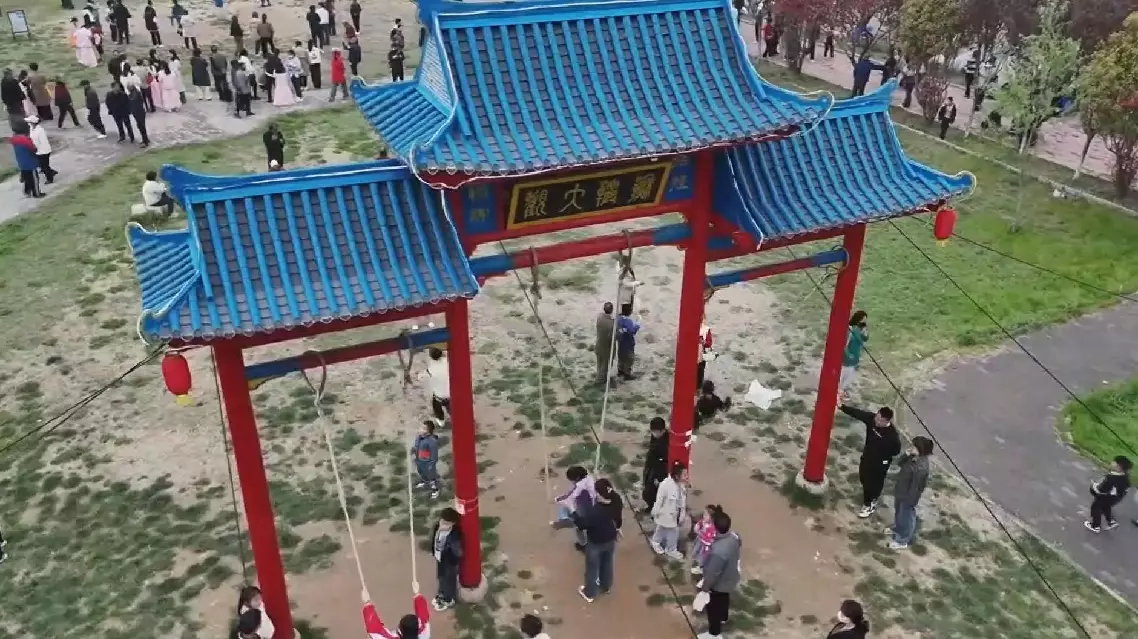
Traditional folk activities held for Qingming Festival



